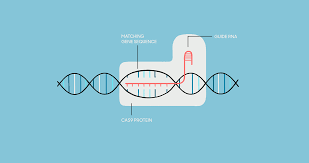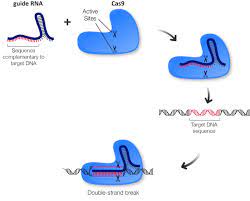7 wonders possible with CRISPR Cas technology
The field of genetic engineering has made rapid progress, precisely because scientists can use a simple tool to extract and edit DNA that can treat and prevent diseases. This tool, commonly called CRISPR Cas, was first shown to be able to edit DNA in 2011. It contains Cas protein and guide RNA molecules, which can be used to cut DNA strands at extremely precise locations and enable scientists to remove the genome.
1. CRISPR-CHIP electronic detection target sequence:
CRISPR technology is a two-part system that can accurately detect and edit genome sequences. Scientists have prepared a chip based on the CRISPR Cas system for nucleic acid identification. CRISPR-CHIP is an electronic biosensor that uses CRISPR to locate specific genes in genomic DNA. The chip was very useful in diagnostic procedures and revolutionized the field.
2. Revolutionary genome editing:

Advances in genome editing have opened new doors for solving medical, agricultural, and other problems. CRISPR has revolutionized the meaning of genetics for our future by increasing the speed of genetic engineering programs. At this rate, don’t be surprised if you see many impossible things become possible in the near future.
3. Improvement of industrial-scale yogurt and chess production:
The natural function of the CRISPR system facilitates industrial processes that use microorganisms. CRISPR-based prevention can be used to make these cultures more resistant to viruses that may interfere with production. In fact, the first discovery of the CRISPR vaccine came from researchers at the food processing company Danisco. Danisco scientists discovered a bacterium called Streptococcus thermophilus, which is used to make yogurt and cheese. Certain bacteria can enter the bacteria and damage the quality or quantity of food. The CRISPR system was found to be equipped with Streptococcus thermophilus to prevent such virus attacks.
4. Treatment of genetic diseases:
With the initial success of the laboratory, many people are studying the medical uses of CRISPR technology. The first evidence that CRISPR can be used to modify mutated genes and reverse symptoms in living animals. By changing the genetic variation of the correct sequence in old mice, the researchers demonstrated a method of treating rare liver diseases that can be treated with a single treatment.
5. Treatment of infectious diseases:
CRISPR can be used to treat infectious diseases, which may provide a way to target specific antibiotics only to pathogens while retaining beneficial bacteria. The system is also used to make white blood cells (WBC) resistant to HIV infection.
6. CRISPR as an imaging tool:

CRISPR-Cas9-based imaging technology enables scientists to track genomic sites of interest in real time. Cas9 was modified to contain imaging probes (ie fluorescent proteins) and was introduced into cells. After delivery, the guide RNA guides the labeled Cas9 to your preferred location and is able to capture an image of the DNA target.
7.CRISPR in crop protection:
Genome design based on CRISPR Cas9 has been used to increase resistance to plant diseases and increase tolerance to major abiotic stresses such as salinity and drought. So far, genetic engineering methods based on the CRISPR system have been used to modify various traits in about 20 plant species.